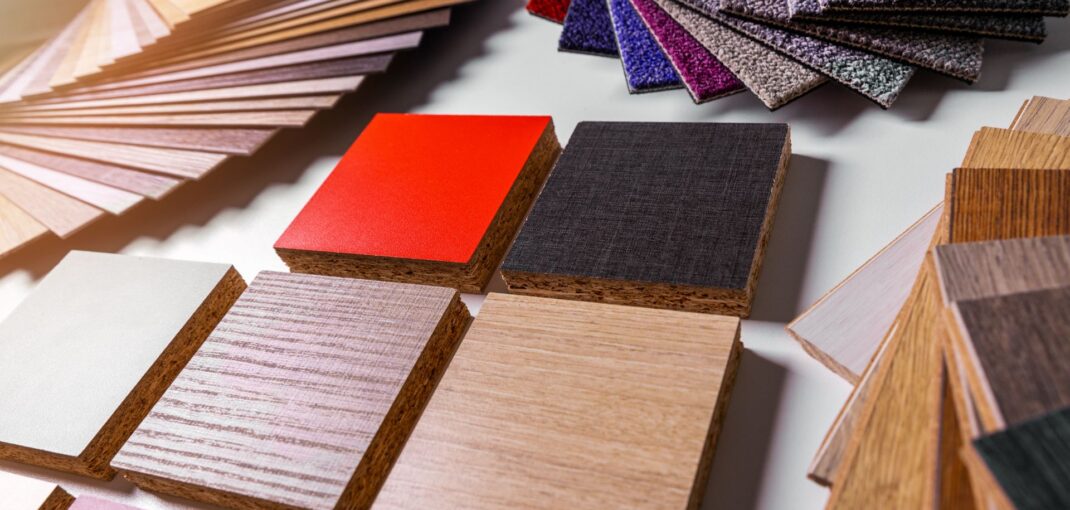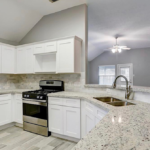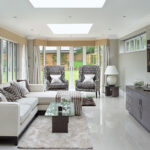Pros and Cons of Flooring Types
What Flooring Should You Buy?
What’s my budget?
- The answer to this question will help you narrow down your options.
Where will the floor be installed?
- The location of your flooring will limit your options – bathrooms, for example, require moisture-resistant flooring.
How durable do I want the floor to be?
- Do you have dogs running around? You might want to shop for durable flooring options that won’t scratch over time.
Do I want the floor to be eco-friendly?
- There are many great options for eco-friendly or sustainably sourced flooring materials.
Am I installing it myself?
- Some types of flooring require professional installation. Decide who will install it to guide your flooring decision.
Do I want radiant floor heating?
- Not all flooring types are compatible with radiant floor heating.
FLOORING TYPES PROS AND CONS
We wish there was a flooring option that checked all the right boxes: affordable, durable, easy to clean, realistic-looking (like wood, slate, etc.) and easy to install. Unfortunately, this isn’t the case, but there’s definitely an option that’s best for you!
Flooring manufacturers have subcategories under each flooring material category. For example, in the vinyl flooring category, many manufacturers offer both luxury vinyl flooring and vinyl composite tile. Each type may be slightly different, but the larger categories will be the focus of the following guide. Use it to narrow down your decision, and then get out there and enjoy exploring each type for yourself!
Laminate pros and cons
Commonly confused with vinyl flooring, laminate flooring is made from wood materials. The fiberboard core contains an image of woodgrain printed beneath a transparent wear layer.
Pros
- Inexpensive
- Easy to install
- Durable
- Typically considered eco-friendly
- Compatible with radiant heating
Cons
- Cheaper options look and feel fake
- Low value for home buyers
- Can’t be refinished
- Photo patterns are repeated
Hardwood flooring pros and cons
We all know the luxury of hardwood floors. They are made of 100 percent hardwood milled from real lumber.
Pros
- Can be sanded and refinished
- Luxurious look and feel
- Reclaimed options for eco-friendliness
- High value for home buyers
Cons
- Expensive
- Difficult DIY installation
- Susceptible to water damage
- Some types not very durable
- Incompatible or, at best, risky with radiant heating
Engineered hardwood pros and cons
This type of flooring contains a real-wood veneer on top of a plywood base layer. This gives it the realistic look and allows more expansion and contraction compared to hardwood.
Pros
- Real wood look and feel
- Easier to install than hardwood
- Higher value than laminate for home buyers
- More eco-friendly than solid wood
- Many types compatible with radiant heating
- Available in two formats – one can attach directly to the subfloor or a floating snap-in option which can be installed over any hard surface
Cons
- Not a DIY job for most
- Cost similar to real wood floors
- Can only be lightly sanded when refinishing
- Susceptible to water damage
Sheet Vinyl flooring pros and cons
Unlike laminate flooring, sheet vinyl flooring contains no wood materials. It is a 100-percent-synthetic flooring material that checks a lot of the right boxes for homeowners.
Pros
- Available in multiple price ranges
- Easy to install
- Highly water resistant
- Easy to care for
Cons
- Like paint, it can off-gas VOCs
- Not very eco-friendly
- Difficult to repair
- Low value for home buyers
- Can tear if items are dragged across the surface
- Not recommended with radiant heating
Luxury Vinyl Tile and Plank pros and cons
This is a realistic tile and plank appearance, long lasting and available for residential and commercial spaces.
Pros
- Very versatile – can be used in virtually any room
- Realistic wood plank or stone tile appearance
- Easy to maintain
- Glue down adhesive or floating snap-in option
- Many different colors and styles available
- Long lasting
- suitable for damp or moist environments
Cons
- If installed over concrete floor, it can be cold to the touch
Tile flooring pros and cons
Tile has been popular for a long time thanks to its various style options and other benefits.
Pros
- Great look
- Many colors and styles available
- Durable
- Water resistant
- Easy to repair
- Eco-friendly options
- Compatible with radiant heating
Cons
- Expensive
- Difficult DIY installation
- Some types prone to cracks or chips
- Typically cold to the touch
Carpeting pros and cons
An inexpensive and versatile option, homeowners love carpet for many reasons. Thanks to technology and manufacturers committed to providing a superior product, carpet has come a long way in recent years.
Pros
- Inexpensive
- Warmth and softness on your feet
- Good sound insulation
- Eco-friendly options
Cons
- Low value for home buyers
- Holds onto dirt and allergens
- Requires professional cleaning
- Not recommended with radiant heating
- Difficult to install
Slate and Travertine flooring pros and cons
Slate and travertine are natural flooring materials, which come in different grades and finishes, and discounts are often available for slate that does not perfectly match or isn’t perfectly flat.
Pros
- Durable and long lasting
- Good value for home buyers
- Luxurious
- Good color selection
- Eco-friendly
- Easy to repair
- Compatible with radiant heat
- This flooring can be placed anywhere throughout the home
Cons
- Expensive
- Cold to the touch
- Difficult DIY installation
- Heavy (requires sturdy subfloor)
- Some types require resealing
- With a heavy mineral make up, slate can peel
Professional Flooring Installation
Once you’ve found the perfect type of flooring for your home, give At Home Expert a call for professional flooring installation. Our experts have years of experience in installing virtually all types of flooring and can even help you decide which type of flooring would be best for your home.






